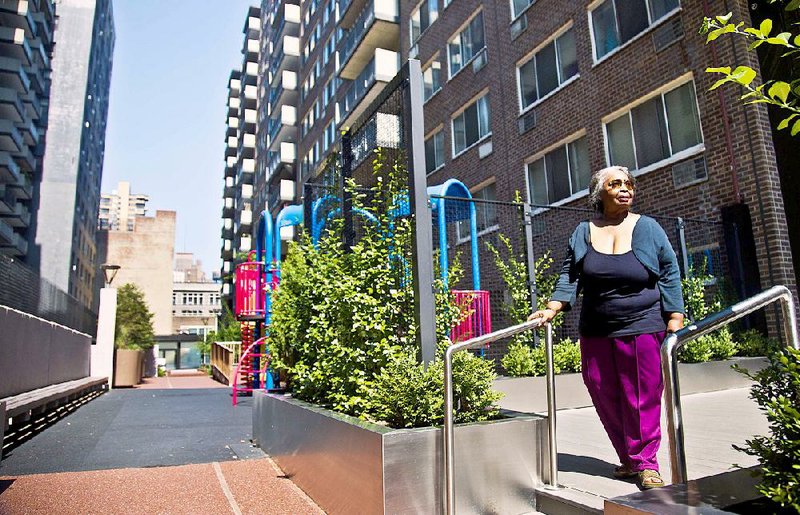NEW YORK -- One new Manhattan skyscraper will greet residents of pricey condos with a lobby in front, while renters of apartments that got the developer government incentives must use a separate side entrance -- a so-called poor door.
In another apartment house, rent-regulated residents aren't allowed to use a new gym that's free to their market-rate neighbors. Other buildings have added playrooms and roof decks off-limits to rent-stabilized tenants.
New York is a city where the rich and relatively poor have long lived side-by-side with who pays what often a closely held, widely varying secret. But a recent spate of buildings with separate amenities for the haves and have-nots is hurling that question out in the open, provoking an uncomfortable debate over equality and economics.
"Nobody treats me like a second-class citizen in my own home," said Jean Green Dorsey, who filed a complaint with the city Human Rights Commission this spring over her Manhattan building's fitness center. She and fellow rent-stabilized tenants aren't allowed to enter it despite a willingness to pay a fee; market-rate renters have access to the center.
Developers say they're motivated by business, not bias, and reserving some prime features for higher-paying residents is the price of having rent-stabilized housing in hot neighborhoods.
But officials are broaching proposals to force more inclusiveness, troubled by landlords who are using tax and zoning breaks to create what critics view as a caste system.
In a city where Mayor Bill de Blasio was elected last year on pledges to increase low-cost housing and shrink income inequality, an outcry erupted after his housing department signed off last month on the affordable bona fides of the Manhattan poor door building; the project was approved and started construction before de Blasio took office. Its creator, Extell Development Co., declined to comment.
"We believe there should be a much more equal approach to all residents," said de Blasio, who, as a councilman voted for the 2009 zoning code change that allowed such arrangements, has said the "nuances" of different doors weren't evident then.
His administration is studying the city housing programs. Meanwhile, Manhattan Borough President Gale Brewer and other officials are clamoring to change the zoning code to end separate-door layouts. State Assemblyman Linda Rosenthal wants to require landlords to offer amenities to all tenants, with provisions for reasonable fees. Councilmen Mark Levine and Corey Johnson are also drafting a proposal to add "class of renter" to the city's anti-discrimination laws.
To critics, treating rent-regulated residents differently sends a galling separate-and-unequal message. But developers say there can be financial and legal reasons for some separation.
Green Dorsey's landlord, Stonehenge Partners Inc., has said in a rights-commission filing that its gym policy is "an inducement to rent" market-rate apartments, noting that stabilized tenants get valuable plums of their own -- like lower rent.
And fairly or not, apartment hunters may hesitate to buy an expensive place on the same floor as renters who don't have the same legal obligations, or means, to contribute to a building's ongoing expenses, said Steven Spinola, president of the Real Estate Board of New York, a major developers' and landlords' group. Even if doors are different, such buildings make for a mixed-income block, he noted.
"I would think that would be regarded as a significant accomplishment," Spinola said.
Business on 08/19/2014
